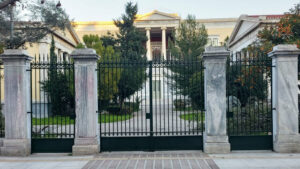When you run the Athens Marathon, you run in the very footsteps of the ancient gods and heroes that gave birth to western civilization. More than that, the Athens Classic Marathon is a bridge that unifies the legend with history. It showcases the strength of human will. It is a fountain of values, of social liability, environmental sensitivity, friendship and solidarity.
It covers the same ground that the Athenian messenger Phiedippides ran when he brought news of victory from the battlefield of Marathon 2,500 years ago.
The Battle on the plain of Marathon in September 490 BCE between Greeks and the invading forces of Persian King Darius was a victory which would go down in folklore as the moment the Greek city-states showed the world their courage and excellence and won their liberty. Although in reality the battle only delayed the Persians in their imperialistic ambitions and greater battles would follow, Marathon was the first time that mighty Persia had been shown beatable and the battle would be represented in Greek art, literature, sculpture, architecture, and pottery, as a crucial and defining moment in the history of Greece.
Robert Browning gave a version of the traditional story in his 1879 poem Pheidippides in his so unique way.
So, when Persia was dust, all cried, “To Acropolis!
Run, Pheidippides, one race more! the meed is thy due!
Athens is saved, thank Pan, go shout!” He flung down his shield
Ran like fire once more: and the space ‘twixt the fennel-field
And Athens was stubble again, a field which a fire runs through,
Till in he broke: “Rejoice, we conquer!” Like wine through clay,
Joy in his blood bursting his heart, – the bliss!
Ask me anything
Explore related questions





